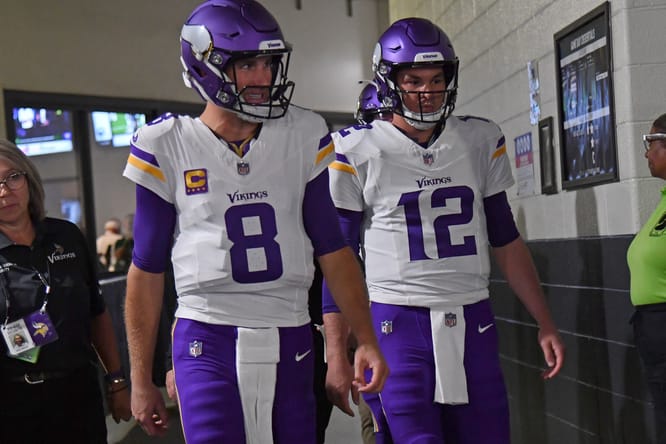The Kevin O’Connell Formula Is Simple

When the Minnesota Vikings were ready to move on from Mike Zimmer after the 2021 season, the next head coach needed to be the polar opposite. Zimmer’s eight-year stay in the Twin Cities was overall positive as his team simply continued to be relevant in the NFL landscape and a couple of playoff wins and division titles were also precious.
The Kevin O’Connell Formula Is Simple
The problem, however, was that his players were done with his harsh approach and wanted something different. His personal feud with general manager Rick Spielman didn’t help the team grow, resulting in back-to-back seasons without a playoff appearance.

Kevin O’Connell arrived in Minnesota after winning the Super Bowl as the offensive coordinator of the Los Angeles Rams. Young, offensive-minded, and a positive mindset are just some of his characteristics.
In year one, KOC’s group finished the regular season with a 13-4 record. A lot of unsustainable one-possession games were the reason why the season was universally titled as a fluke.
Still, a trip to the playoffs with some solid offensive football and a clutch team that simply didn’t make mistakes in the final minutes was an encouraging sign, although the postseason contest was lost, mainly because of the defense.

Year two practically ended in Week 8 when Kirk Cousins tore his Achilles, but the realization that O’Connell elevated him into the MVP conversation and then managed to win a pair of games with Joshua Dobbs, who didn’t know the playbook a few days after joining the club, and some offensive explosions with Nick Mullens throwing the ball showed the potential of an O’Connell-offense.
His third campaign started with a victory over the New York Giants. The offense failed to produce huge numbers but had an efficient day.
The formula has been pretty obvious through roughly 31 months in charge of the Vikings and 35 regular season games played. O’Connell’s Vikings need two things to be successful.
Starting QB

In the 25 games with Cousins under center, O’Connell’s Vikings went 17-8. He is a master at scheming his receivers open and needs a quarterback who can reliably get the ball to them. Cousins could do that. After Cousins’ injury, the Vikings won three of nine games. Jaren Hall started in Week 9, and Dobbs played three quarters in that game, completing an unlikely comeback against the Falcons.
Dobbs then started and finished the contest over the Saints. Later in the year, Dobbs started versus the Raiders, but after three quarters, with the scoreboard showing a 0-0, O’Connell pulled the Passtronaut and inserted Nick Mullens, who guided the Vikings to a field goal and a rare 3-0 win.
Sam Darnold doesn’t have a resume like Cousins, but he has the arm and the skill set to feed the wideouts, and he did it marvelously against the Giants, barely mixing in misfires, having good timing, decision-making, and accuracy.
When Cousins and Darnold start a game, O’Connell is 18-8 in the regular season.
Limit and Create Turnovers
Turnovers are crucial in the sport of football, but that isn’t a new idea implemented by O’Connell. However, when his team loses the turnover battle, the record is 3-14. Conversely, they have won all 18 games when at least breaking even in the turnover column.

The quarterback commits most turnovers. Cousins was up-and-down in that category. Interceptions are acceptable if they happen while the passer is aggressive. Mullens and Dobbs were too aggressive, making throws they couldn’t pull off. A balance is required.
Darnold’s main problem in the past was interceptions. His career numbers show 57 interceptions ‒ the same number as career starts. Still, Darnold’s first appearance in a Vikings uniform was promising, and the INT was a fluky play.
Fumbles are another problem for the Vikings. The reliable fullback C.J. Ham lost the ball early in the game. Everyone involved always preaches ball security, which should remain a point of emphasis.
Last year’s defense created 22 turnovers, an average number, while the offense coughed it up 34 times. A pair of turnovers on each side results in a neutral turnover differential after one game in 2024.
Editor’s Note: Information from Pro Football Reference helped with this article.
Janik Eckardt is a football fan who likes numbers and stats. The Vikings became his favorite team despite their quarterback at the time, Christian Ponder. He is a walking soccer encyclopedia, loves watching sitcoms, and prefers Classic rock over other genres. Follow him on Twitter if you like the Vikings: @JanikEckardt
